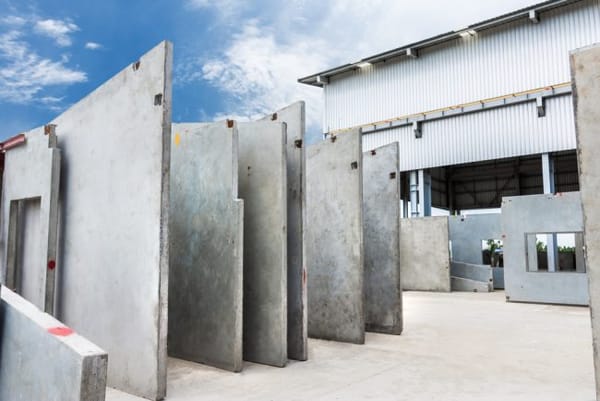Conviction overturned over deficiencies in expert evidence
The Queensland District Court has recently overturned a company’s conviction and $200,000 fine after finding significant limitations of the prosecution’s expert evidence.
In Quickcell Technology Products Pty Ltd Bell (2020), the Queensland District Court set aside the original judgment, finding the inaccurate and imprecise evidence of the leading expert evidence did not support the Magistrate’s original findings.
Background
Quickcell Technology Products (Quickcell) manufactured precast concrete panels that were used in the construction of rail infrastructure projects in South East Queensland. In December 2012, one of Quickcell’s precast concrete panels failed after topping concrete was poured onto it. No workers were injured.
Workplace Health and Safety Queensland (WHSQ) charged Quickcell with failing to discharge its duty of care under section 23 of the Work Health and Safety Act (WHS Act) by manufacturing the panel to an inadequate thickness and therefore failing to ensure the panel was manufactured without health and safety risks.
Decision at first instance
The Magistrate found the Prosecution’s expert evidence proved that Quickcell failed to safely manufacture concrete panels and therefore was in breach of the WHS Act. The Magistrate accepted the Prosecution’s evidence of Professor Dux, a civil engineer with expertise in concrete structures, in determining the panel failed because it was too thin and this inadequate width was the result of Quickcell’s manufacturing process.
Decision on appeal
The District Court found deficiencies in the expert evidence prevented the Court from being satisfied beyond reasonable doubt that Quickcell failed to discharge its duty of care.
The Court found that the conclusions of the expert evidence were based on a limited period of observation and these conclusions conflicted with Quickcell’s first-hand evidence of its actual business operations.
Was the panel an inadequate width?
Initially, the Magistrate accepted Professor Dux’s conclusion that the panel failed due to its inadequate width. This was after Professor Dux measured the failed panel as having variations as shallow as “less than 75mm” when Quickcell conceded that the panel design required a depth of 95mm.
However, the District Court found Professor Dux’s inspection methods were difficult to verify and prevented recording precise measurements.
The District Court found Professor Dux investigated the depth of the panel on two occasions. The first brief examination (as described by Professor Dux) on 30 November 2012 was when the panel was still on site. The second examination on 8 January 2013 was when the panel had been removed, damaged and stored in a skip bin. The District Court found that the Professor’s measurements were taken from sections that may have been damaged by those movements. The District Court was hesitant to rely on the Professor’s measurements after finding the expert had a preference for measuring dimensions in terms of “around” a nearby millimetre as opposed to recording the exact millimetre. The District Court identified other limitations, including that Professor Dux only provided a suggested approximation of “less than 75mm”, and used a tape measure instead of the more precise and readily available callipers.
Was the manufacturing process flawed?
The prosecution relied on an assumption that the manufacturing was done “exactly the same way” throughout the entire project. However, this was based on Professor Dux only observing the manufacturing process of two panels. Furthermore, the evidence actually indicated that the workers had no understanding if their personal technique for screeding was uniformly used by other workers. As the panels were manufactured by workers and not via an automated process, there was no guarantee this observed methodology was used for the failed panel. As a result, the District Court could not be satisfied that the manufacturing process caused the panel in question to be too thin.
How did the expert evidence conflict with Quickcell’s evidence?
The District Court found Professor Dux’s conclusions conflicted with Quickcell’s evidence. Specifically, a business record tendered by Quickcell demonstrated Thiess, Quickcell’s client that received the panels, had a quality-control review process for ensuring that only panels manufactured to a certain thickness would be accepted. The business record indicated that Thiess historically identified and rejected panels that were too thin.
This evidence appeared to be overlooked at first instance by the Magistrate. On appeal, the Court found it to be a crucial piece of evidence that demonstrated both Quickcell and Thiess were aware of the risk of thin panels. The Court found that the quality-control practice raised doubts about the expert evidence, as it demonstrated that panels with deficient depths would usually be rejected.
The Court found that this evidence would lead a Court to conclude that the failed panel was not deficient in thickness, or “at the very least” would lead to reasonable doubt as to the panel having been manufactured too thin.
Key takeaways from this case
This case is an example of the importance of having quality-control systems in place that produce records of compliance with safety requirement. Although a significant risk of injury occurred in this matter, the prosecution was unable to establish beyond reasonable doubt that this was because of a failure in the company’s manufacturing process.
From the experts behind the Health & Safety Handbook, the Bulletin brings you the latest work health and safety news, legal updates, case law and practical advice straight to your inbox every week.

